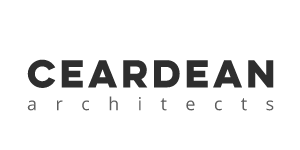Here are some helpful explanations (hopefully) of these increasingly common terms in the world of warmer homes & energy conservation. We don’t get scientific on anything and broke it down as simply as possible. What they are, and what you need to do!
What Is a U-Value?
What is a k-Value?
What is an R-Value?
For Current Building Regulation U-Values Go Here:
What is a U-Value?
Also known as ‘Thermal Transmittance‘.
In short, A U-value is a measure of how effective a material (or composite of materials) is as an insulator. In the case of construction, it’s generally agreed to be the most reliable way to quickly determine how much heat energy will be lost through a building element, i.e. A Wall, Floor, Roof or Window. But, you likely won’t get U-Values on specific insulation products. It’s a holistic figure, taking into account many things.
The Lower the U-value the Better the Performance.
A U-value is the total of the thermal resistances (explained below) of the layers that make up an entire building element – for example, a Roof (slates, felt, joists, insulation), Wall (blocks, insulation, plaster) or Floor (concrete, sand, DPM, insulation & flooring).
It also includes adjustments for any fixings or air gaps, this is critical. As homes get warmer (more and more insulation) this is where a lot of heat is actually lost in a building. And this can be loads when it’s a badly built building. Heat takes the path of least resistance. You could have 5 ft of insulation, but with lots of cracks or gaps (installed by untrained builders), it’s pointless.
So this is why the U-Value is the benchmark for our understanding of heat loss in the Construction Industry. It kind of covers all corners. Also, this is why the Building Regulations mainly consider U-values. There’s that reason too. So we need to get them right.


What is a k-Value?
Don’t get confused by the Thermal Conductivity (k-Value). This is another similar measurement of heat loss but looks at specific materials alone. It considers the transport of energy through the material (i.e. through foam insulation, or through a concrete block, and so on). It doesn’t consider the thickness of the material. So not as useful as the U-Value, which does. But it’s great to determine the quality of an INSULATION product itself.
The lower the k-Value the better the material. This one is also called the Lambda Value!
A very good k-value for say insulation is 0.022 W/mK. Xtratherm, Kingspan and some others generally make their PIR insulation (the yellow-ish stuff with foil on both sides) to this figure. It’s as good as it gets (for what people can afford anyway). So 200mm PIR is much better than 100mm PIR. (but not twice as good, don’t ask).
Mineral wool (the fuzzy soft stuff) is usually cheaper but it’s just not as good an insulator. (it has other qualities, however; easier to install in tricky spaces, and great for damping sound). But it has a k-value of 0.044 W/mK, and as you can see it’s a lot higher than the PIR (which is a bad thing). We’ll go into the differences in another post.


What is an R-Value?
And then there’s Thermal Resistance, the R-Value. If you’re looking into insulation, maybe buying some in any of the large DIY stores, you’ll likely see a lot of R-Values printed on the packs. It’s a fairly useful measure but only focuses on the conduction of heat. Which is heat passing through the material. But heat transfers in various ways, remember physics class 101; conduction, convection and radiation.
Since U-Value considers all of these in some way, it just gives a more reliable figure overall.
The thermal resistance, or R-value, measures a material’s ability to prevent the flow of heat (hot or cold air) through a certain thickness, through 100mm insulation, 200mm of insulation for example.
The Higher The R-Value The Better The Insulation


Part L Building Regulations 2019 ‘Dwellings’: U-Values
So here they are. The new 2019 U-Values we must carefully work to for new and existing dwellings. Ideally, you will be exceeding these values where possible. The difference in cost, in comparison to the overall building project, is marginal, and potential savings in heating costs over the lifetime of the home are considerable. And the Government’s Building regulations will likely reduce these again in the, not too distant future.
Refer to our page on nZEB buildings for more info on the big changes with regards to existing buildings in particular.
| New Buildings – Part L 2019 | |
| Building Element | Minimum U-Value |
| Ground Floor (No Underfloor Heating) | 0.18W/m²K |
| Ground Floor (Underfloor Heating) | 0.15W/m²K |
| External Walls | 0.18W/m²k |
| Flat Roof | 0.20W/m²K |
| Pitched Roof (Sloping Ceilings; Rafter Level) | 0.16W/m²K |
| Cold Roof (Ceiling Level) | 0.16W/m²K |
| Existing Buildings Part L 2019 | |
| Building Element | Minimum U-Value |
| Ground Floor (No Underfloor Heating) | 0.45W/m²K |
| Ground Floor (Underfloor Heating) | 0.15W/m²K |
| External Walls (Cavity) | 0.55W/m²K** |
| External Walls (Other – Not Cavity) | 0.35W/m²K |
| Flat Roof | 0.25W/m²K |
| Pitched Roof (Sloping Ceilings; Rafter Level) | 0.25W/m²K |
| Cold Roof (Ceiling Level) | 0.16W/m²K |
| External Doors, Windows, Rooflights & Curtain Walling | 1.40W/m²K |
